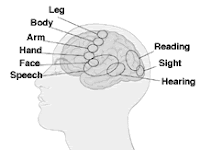I
pondered the differences between the two facilities. The regimented ward operated for several
patients as a hospice. It was surprising
how many people had dire illnesses. Physio treatment allayed their mobility restrictions while they struggled to hold on to life’s spark. At least one person died while we were
there. For
some the rehabilitation on offer merely opened a window of opportunity to go
home before their condition worsened.
This was no place for people with terminal illness – they needed hospice
care or the comfort of their own home.
It suggested that existing facilities did not have the capacity to
manage the numbers of people requiring intensive hospice care. As the numbers of ageing people with chronic
conditions are set to rise exponentially over future decades, it is glaringly
obvious that public resources are inadequate.
Survivors of severe stroke and various devastating tumours, some of whom
had lost the capacity to fend for themselves, were a discernible component of
the ward population. Several did not
appear to have family support, either because of geographical displacement or
other circumstance.
These
public facilities were fully occupied with continuous waiting lists. It did not take much imagination to figure
hospice facilities were similarly stretched.
‘Future proofing’ did not appear on the horizon. A rather dystopian outcome looms if the
paradigm does not shift substantially to counter the coming tidal wave. Hopefully, our citizenry will not only demand
increased public health resources but cultural change to make the labyrinth better
respond to individual need.
As
with so many turns along the journey, we were pleasantly surprised when
informed the consensus among the specialists was that Carolie need not go to
RILU but could go home as soon as practicable.
Her physical recovery had accelerated and the required home
modifications completed. She had lost a
lot of weight, had trouble eating and dealing with bouts of nausea. The left side palsy left her weakened,
lacking coordination and struggling for balance. Her speech was affected and she had
experienced a degree of cognitive damage that affected her overall capacity in
areas like decision making, information and complex task management, and
general motivation. The degree of damage
and her capacity to find new pathways was unknown. It was daunting but our overall sense was
elation at surviving a horrible ordeal.
We
knew the next phase would bring difficult challenges. Little did we know at this stage how these
would eventuate, involving more major surgery and the extraordinary arenas of
orthotics, 3D imaging, cranial implant construction and cranioplasty. Carolie’s outpatient experience for the next
year or so was a complex rehabilitation regime, including physio, speech,
occupational and vocational therapies. We
had both changed and our relationship had evolved, but then we all change and evolve all
the time.




No comments:
Post a Comment